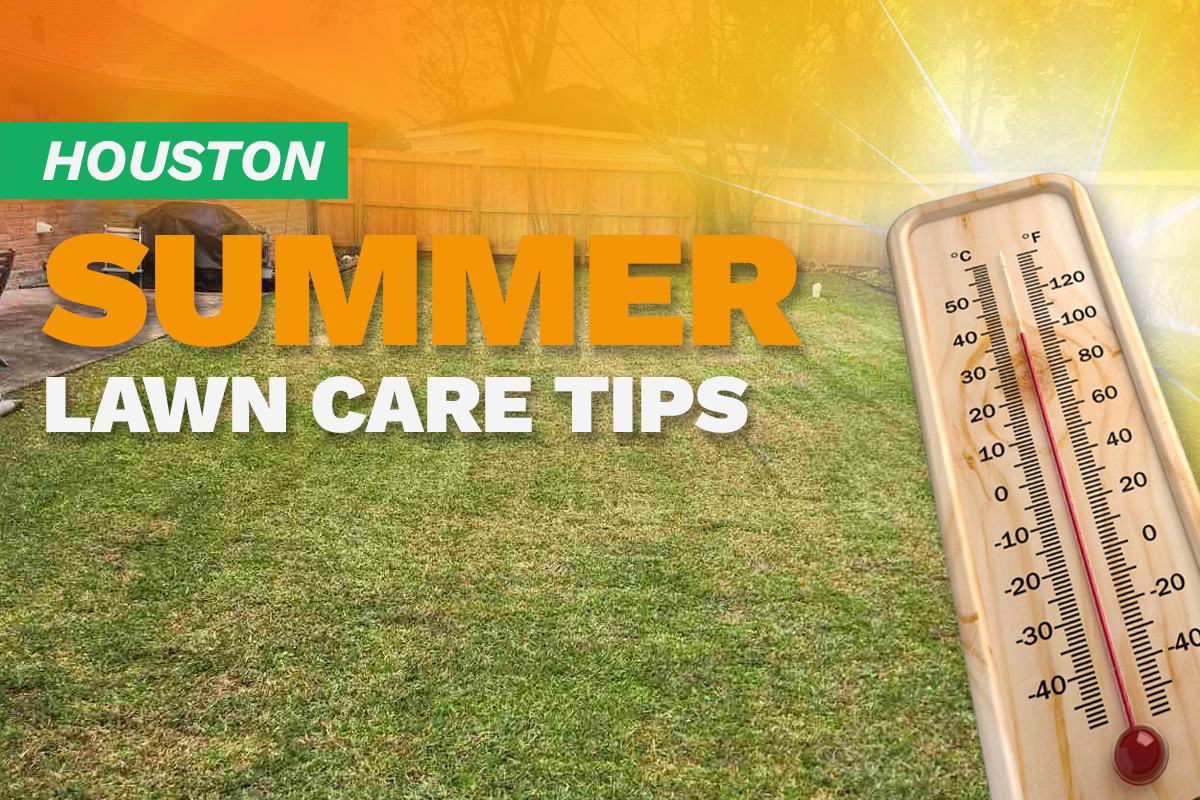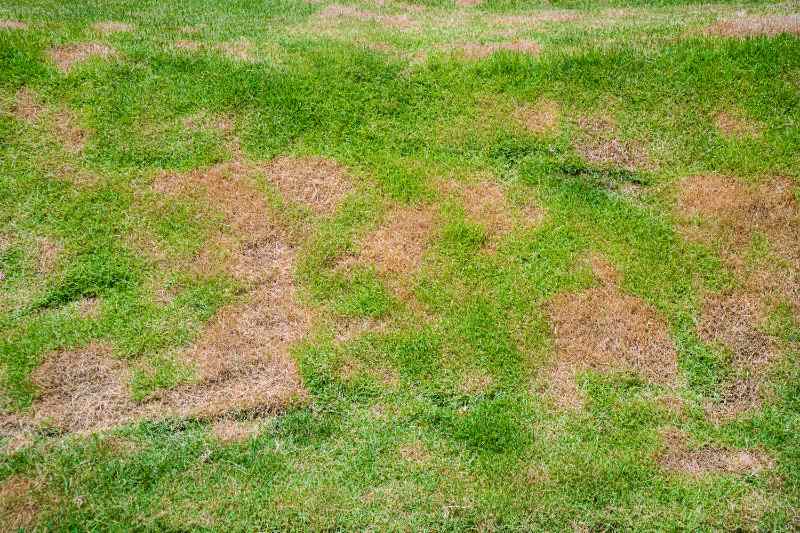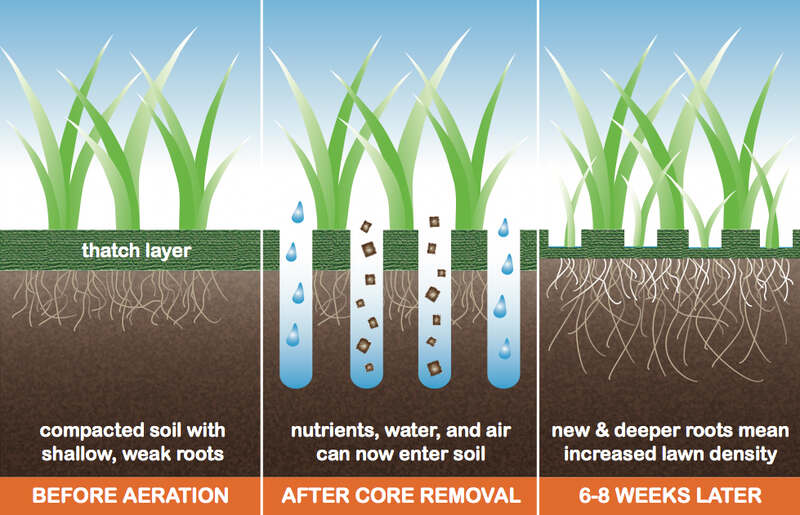
Taking care of your lawn during Houston’s hot summers can be tough. To keep your lawn looking good, focus on watering correctly, mowing at the right height, controlling pests, preventing diseases, and fertilizing wisely.
When you work with Houston’s heat and humidity instead of fighting against it, your lawn will stay healthy even in the hottest months. The secret is adjusting basic lawn care to fit our climate.
For the most successful lawn, make sure you opt for the “Best Grass Types for Houston.”
Water the Right Way
A good rule of thumb is that your lawn needs an inch of water per week, on average, to perform its best in the searing Houston summers. You’ll get some help from Mother Nature, but the hottest part of the year – July and early August – tends to be a little drier here, so your lawn might need an occasional assist from your irrigation system.
The key is to space out your waterings. Houston’s clay-heavy soil makes it hard for water to soak in, so instead of watering your lawn all at once, use short sessions two to three times a week. This helps water soak deep into the soil to reach the roots instead of wasting it as runoff.
Whenever possible, water early in the morning, before 9 a.m., to avoid the effects of evaporation. And when it rains heavily, cut back on watering; too much moisture can cause lawn diseases.
Check out our guide on “How Long Should I Water My Lawn?” to make sure your grass gets the right amount of water it needs to thrive.
Step Up Your Mowing, and Mow Higher
Our warm-season grasses grow rapidly during H-Town’s hot, humid summers, which means you’ll need to mow at least once a week. That way, you’re not cutting more than a third of the grass blade each time. Cutting more than that stresses grass.
Also, when temps are regularly 85 degrees or higher, raise your mower deck a bit. Letting your grass grow taller shades the soil, keeps moisture in, and makes the ground cooler for your lawn’s roots.
Mow between 10 and 11 a.m. after morning dew has dried or after 7 p.m. when it starts to cool. And keep those mower blades sharp; dull blades tear grass, making it harder for the turf to recover and creating entry points for diseases that love Houston’s humidity.
Use our guide on “Common Lawn Mowing Mistakes to Avoid” to keep your lawn healthy and looking great.
Control Summer Lawn Pests

Destructive lawn pests love Gulf coast summers. Cinch bugs attack your lawn, especially St. Augustinegrass, causing yellow to brown patches, while white grubs damage the roots, leaving spongy brown patches. Fire ants build underground nests, and they don’t give up easily, so you’ll need to attack them aggressively.
Spotting pests early is key to keeping your lawn healthy. Proper lawn care also reduces fleas, ticks, and mosquitoes that thrive in overgrown, poorly maintained areas and can spread diseases to your family and pets.
Keep bugs at bay with our guide on Summer Lawn Pests and How to Get Rid of Them.
Watch for Lawn Diseases

It’s hot. It’s humid. It’s Houston, and lawn diseases are a common problem in the area. The most common issues include brown patch (circular brown spots that expand rapidly), take-all root rot (widespread yellowing that turns to dead areas), and gray leaf spot (which specifically targets St. Augustine grass).
As the saying goes, “an ounce of prevention is worth a pound of cure.” A healthy lawn is the key. Don’t use too much fertilizer, water only in the early morning, improve drainage in your yard, and loosen compacted soil. If you have St. Augustine grass, watch it closely during late summer.
Our guide on Common Lawn Diseases and How to Identify Them can help you find what’s invading your grass.
Attack Weeds

Weeds grow year-round in Houston, and the summer heat brings out the toughest ones. The key is to attack them early by spraying with pre-emergent herbicides at these key times: March for crabgrass, June for summer weeds like nutsedge and doveweed, and September for winter weeds like henbit and chickweed.
For weeds already growing, you’ll need specific post-emergent treatments for the type of weed in your yard. Use specialized products to control nutsedge (such as SedgeHammer), quinclorac for crabgrass, and a combination approach for stubborn dollarweed that includes fixing drainage issues.
A healthy lawn is your best defense against weeds, but if they do invade, you can use our guide on “Common Lawn Weeds in Texas: How to Identify and Control Them” to take back your lawn.
Feed Your Grass
Houston’s clay soil has a high pH level that locks up important nutrients like iron, making them hard for your grass to use. This is why many Houston lawns turn yellow even when you fertilize regularly, the nutrients are there, but your grass can’t get to them. Use a soil test kit from your local extension office or a hardware store to see exactly what your lawn needs.
Use slow-release lawn fertilizers during hot weather that gently feed your grass over several weeks to months, choosing products with a 3-1-2 or 4-1-2 ratio every 6-8 weeks. Look for slow-release products that include extra nutrients like calcium, magnesium, and micronutrients such as iron and manganese. Avoid fertilizing drought-stressed grass until it has recovered.
Timing your treatments will make the difference between a lush, green lawn and a yellow disaster. Check out our guide on “When to Fertilize Lawns in Texas” to cover your grass.
Optional Summer Lawn Tasks
Depending on the individual needs of your yard, there are a few extra care tasks you can do to make your lawn greener than your neighbors’ envy. Aerating, dethatching, and adding mulch can make a major difference in your lawn. Here’s how these tasks can elevate your lawn game:
Aerate

Aeration loosens our hard clay soil, which becomes compacted due to foot traffic, equipment use, and the natural settling of clay. Aerate your lawn in late spring (April-May) or fall (September-October). It’s best to aerate before planting grass seeds because it helps seeds touch the soil better, which makes them sprout and grow better.
You might need to aerate if you see water pooling on the lawn instead of soaking into the ground. You can test for compacted soil by pushing a screwdriver into the ground. If it won’t go all the way into the ground, the soil is likely compacted. Aeration creates pathways for air, water, and nutrients to reach roots.
Avoid aerating during peak summer heat when your lawn is already stressed. For more info, check out our guide on “When to Aerate Lawns in Texas.”
Dethatch

Removing the dead grass layer that builds up between your living grass and soil is called dethatching. During Houston’s hot, humid summers, St. Augustine and Bermuda grass can quickly create thick layers of this dead material. You should remove thatch when it’s more than ¾ inch thick.
The best time to dethatch in Houston is late spring through early summer, after your second mowing but before peak heat stress arrives. Use a dethatch rake for small areas or rent a power dethatcher for larger lawns. After dethatching, your grass may look rough for a few weeks, but this gives it room to grow new, healthy shoots. For
For more info on “How to Dethatch Your Lawn,” check out our guide.
Amend the Soil
Compost improves clay soil by adding organic material that helps water and nutrients reach grass roots more effectively. Apply a thin layer (just 1/4 inch) of quality compost once a year. The best time to use compost in your yard is right after you aerate your lawn. Adding compost helps loosen hard clay soil and stops it from getting too packed down.
Use well-aged compost or organic mulch. Spread evenly with a rake and water lightly. Don’t overdo it or you’ll smother the grass; a quarter inch layer is all you need. You can also leave grass clippings after mowing. This “grasscycling” returns nitrogen to soil, reducing fertilizer needs while helping retain moisture, beneficial in Houston’s climate.
For more ways to use mulch to help your grass, check out our guide on “How to Improve Your Lawn With Mulch.”
FAQ: Houston Summer Lawn Care
No. Don’t use weed killers and fertilizers at the same time in hot weather. Apply weed killers in the cool mornings, then wait at least two weeks before adding fertilizer. High temperatures can increase the risk of lawn burn when products are combined.
Overwatering and watering at the wrong times. Many Houston homeowners water daily in the evening, which creates prolonged moisture that promotes fungal diseases. Instead, water deeply just two to three times weekly in the early morning.
Keep Your Lawn Thriving This Summer

Now that you understand the essential summer lawn care strategies for Houston, you can handle the watering, mowing, pest control, and fertilization yourself using these guidelines. Or you could hire the best Houston lawn care pros to help with mowing, weeds, or fertilizing to keep your grass green and healthy through another scorching Texas summer.
Related Reading:
- Low-Maintenance Landscaping Ideas for Your Houston Yard
- Tips for Fall Lawn Care in Houston
- ‘King of the Hill’: How to Get a Lawn Like Hank’s
Main Image: Lawn mowed by a LawnStarter pro in Houston, TX. Illustration by Whitney Lehnecker / LawnStarter